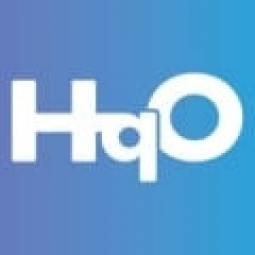Technology Category
- Infrastructure as a Service (IaaS) - Virtual Private Cloud
- Wearables - Virtual Reality Glasses, Headsets & Controllers
Applicable Industries
- Buildings
- Cities & Municipalities
Applicable Functions
- Procurement
- Product Research & Development
Use Cases
- Building Automation & Control
- Smart Campus
About The Customer
National Development is a multifaceted real estate company that manages The District Burlington, a 1.3 million square feet suburban office park located in Burlington, MA. The property is one of the only mixed-use environments of its kind in Greater Boston and is 96% leased to a diversified roster of 60+ regional, national, and global tenants. The company is known for its tenant engagement initiatives and was acknowledged by their 2020 TOBY Award. National Development is committed to enhancing their tenant engagement in modern and creative ways and strengthening their workplace culture across the property’s large campus.
The Challenge
National Development, a multifaceted real estate company, was faced with the challenge of enhancing tenant engagement in their suburban office park, The District Burlington. They were tasked with uniting and strengthening their workplace culture across the property’s large campus. The company was heavily reliant on tenant gatekeepers for communication, which often led to breakdowns in the communication process. This was due to the gatekeeper’s presence in the office and their ability to quickly disseminate information. National Development realized that depending on email was not an efficient way to inform people of property-wide events and information. They needed a way to directly own the tenant communication process, cutting out the middlemen and connecting directly with their building’s consumers. They also recognized that the modern tenant population was more technologically advanced and that capturing a larger audience relied on a mobile app that would place these communications right in the palms of their tenants through their smartphones.
The Solution
To address these challenges, National Development partnered with HqO, a workplace experience technology provider, in February 2018. Through the HqO app, they were able to disseminate information to all of their tenants and employees, spreading their workplace culture to people they were previously unable to reach. The partnership also allowed National Development to combine forces with HqO’s best-in-class ecosystem of technology partners from HqO’S Marketplace. Through partners such as EXOS, a leading fitness and wellbeing provider, they were able to supplement their on-site amenities in new and exciting ways. For example, by leveraging digital programming, EXOS enhanced their health and wellness offerings through virtual classes, hosting individual digital coaching and group check ins, safe in-person registrations, and more. They also deepened their connection with their surrounding community through promoting their corporate social responsibility initiatives. Through Building Impact, they were able to offer unique, virtual volunteer opportunities.
Operational Impact
Quantitative Benefit

Case Study missing?
Start adding your own!
Register with your work email and create a new case study profile for your business.
Related Case Studies.

Case Study
Turning A Stadium Into A Smart Building
Honeywell created what it called the “intelligent system” for the National Stadium in Beijing, China, turning the venue for the opening and closing events at the 2008 Summer Olympics into a “smart building.” Designed by highly controversial artist Ai Weiwei, the “Bird’s Nest” remains one of the most impressive feats of stadium architecture in the world. The 250,000 square meter structure housed more than 100,000 athletes and spectators at a time. To accommodate such capacity, China turned to Honeywell’s EBI Integrated Building Management System to create an integrated “intelligent system” for improved building security, safety and energy efficiency.

Case Study
Energy Saving & Power Monitoring System
Recently a university in Taiwan was experiencing dramatic power usage increases due to its growing number of campus buildings and students. Aiming to analyze their power consumption and increase their power efficiency across 52 buildings, the university wanted to build a power management system utilizing web-based hardware and software. With these goals in mind, they contacted Advantech to help them develop their system and provide them with the means to save energy in the years to come.
.png)
Case Study
Smart Street Light Network (Copenhagen)
Key stakeholders are taking a comprehensive approach to rethinking smart city innovation. City leaders have collaborated through partnerships involving government, research institutions and solution providers. The Copenhagen Solutions Lab is one of the leading organizations at the forefront of this movement. By bringing together manufacturers with municipal buyers, the Copenhagen Solutions Lab has catalyzed the development and deployment of next-generation smart city innovations. Copenhagen is leveraging this unique approach to accelerate the implementation of smart city solutions. One of the primary focus areas is LED street lighting.

Case Study
Buoy Status Monitoring with LoRa
The Netherlands are well-known for their inland waterways, canals, sluices and of course port activities. The Dutch Ministry of Infrastructure indicates that there are thousands of buoys and fixed items in and near water environments that would profit from IoT monitoring. One of the problems with buoys for example, is that they get hit by ships and the anchor cable breaks. Without connectivity, it takes quite some time to find out that something has happened with that buoy. Not to mention the costs of renting a boat to go to the buoy to fix it. Another important issue, is that there is no real-time monitoring of the buoys at this moment. Only by physically visiting the object on the water, one gains insight in its status.

Case Study
Barcelona Case Study
Barcelona’s heavy traffic and its associated high levels of pollution were the primary factors that motivated some companies and universities to work on strategies for improving traffic in the city centre. Bitcarrier is one of the technologies involved in the In4Mo Project, whose main objective is to develop the applications that form the core of smart mobility, one of the fundamental pillars of the smart city concept.








